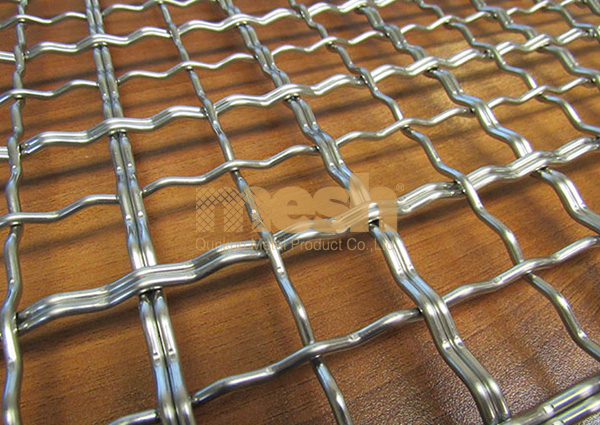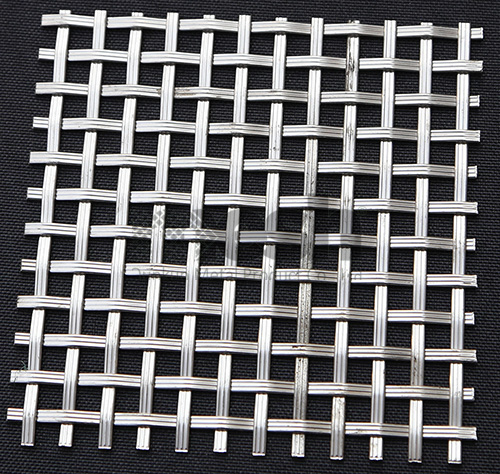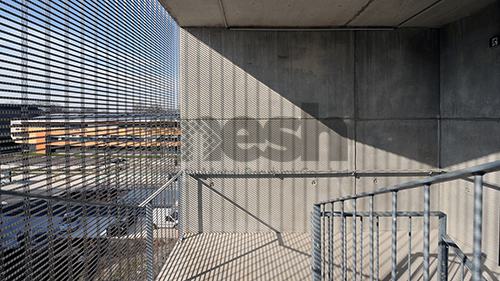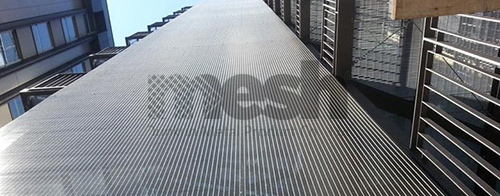Architectural Woven Mesh has emerged as a revolutionary element in landscape architecture, seamlessly blending with the natural world to create awe-inspiring designs. This innovative design approach has breathed new life into the way we perceive and interact with outdoor spaces. In this article, we delve into the captivating realm of Architectural Woven Mesh in landscape architecture, exploring how this design element is harmonizing with nature and transforming outdoor environments into breathtaking works of art.

At its core, Architectural Woven Mesh represents a harmonious coalescence of human ingenuity and the natural world. This versatile material, woven from metal wires into intricate patterns, forms a delicate yet robust architectural element. When integrated into landscape architecture, it becomes a conduit to intertwine the built environment with the organic beauty of nature. Architectural Woven Mesh is a testament to the innovative spirit that seeks to harmonize the man-made with the natural, resulting in visually stunning and ecologically sustainable landscapes.


The beauty of Architectural Woven Mesh lies in its ability to adapt and complement various natural landscapes. Whether it's a lush park, a serene garden, or an arid desert, the mesh effortlessly molds itself into the existing environment. Its flexible and customizable design allows architects and landscape designers to create a seamless transition between the architectural and natural elements, providing a canvas for artistic expression that mirrors the organic patterns found in nature.
Moreover, the incorporation of Architectural Woven Mesh enhances the sensory experience of outdoor spaces. The play of light and shadow on the woven patterns creates a dynamic and ever-changing visual tapestry, imbuing the landscape with a sense of movement and vibrancy. As sunlight filters through the mesh, it casts captivating shadows and patterns on the ground, resembling the dappled light under a canopy of trees. This interplay of light not only adds an aesthetic dimension but also contributes to the overall ambiance and atmosphere of the outdoor space.

Furthermore, Architectural Woven Mesh serves practical purposes in landscape architecture. It can be employed as climbing structures for plants, allowing for vertical gardening and the integration of greenery into urban environments. The mesh provides a supportive and aesthetic framework for the growth of climbing plants, enhancing the ecological footprint of the landscape while maintaining a visually appealing design. This functional aspect ensures that the mesh not only harmonizes with nature but actively promotes its growth and sustainability.


In conclusion, Architectural Woven Mesh stands as a remarkable innovation that has found its place in landscape architecture, seamlessly blending with the natural world and transforming outdoor spaces into living works of art. The fusion of human creativity and natural beauty has led to a design element that not only enhances the aesthetics but also promotes sustainability and ecological harmony. As the world continues to embrace the coexistence of nature and architecture, Architectural Woven Mesh will undoubtedly remain a cornerstone in the creation of visually stunning and ecologically sustainable landscapes.
pre:Enhancing Security with Architectural Woven Mesh: A Design Imperative
next:Architectural Woven Mesh in Renovations: Modernizing Traditional Spaces
© 2025 Joinwin Architectural Wire. All Rights Reserved. | Sitemap
Recommended Read
Luxury Chain Link Curtains for Southeast Asia – Premium Decorative Wire Mesh Manufacturer from China
Luxury Decorative Metal Mesh for Middle Eastern Interiors and Architecture